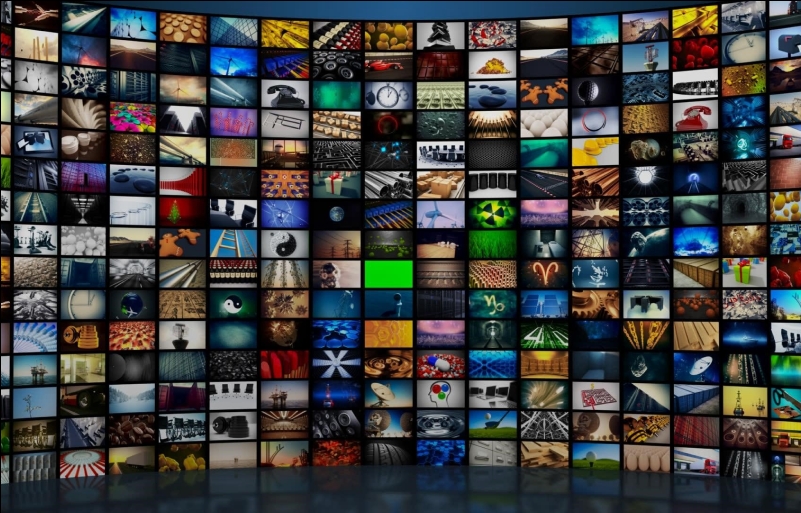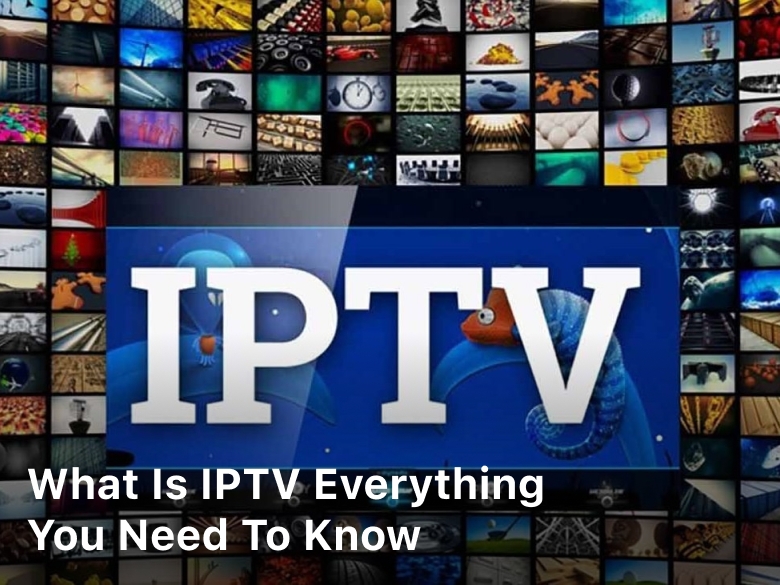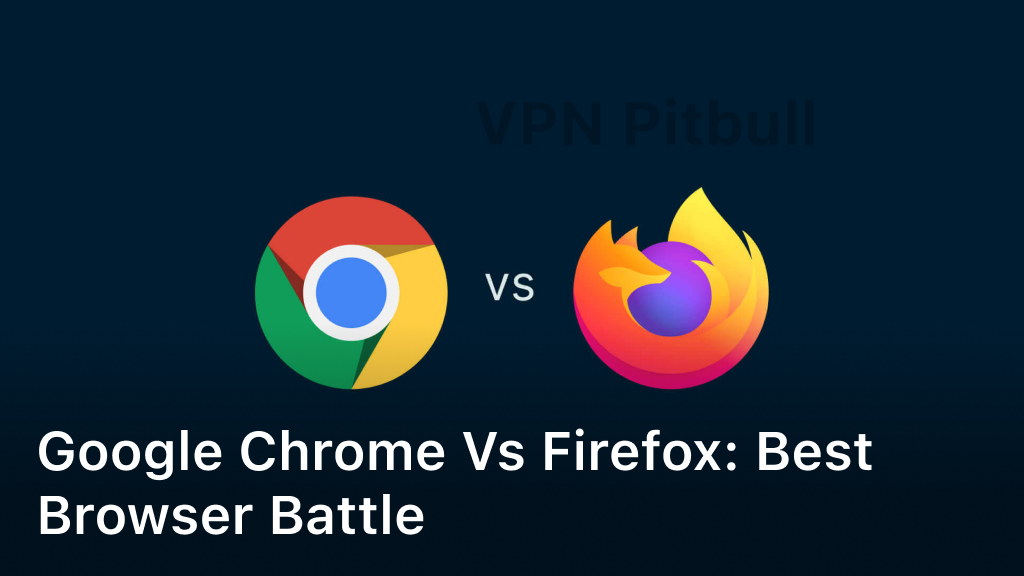What is IPTV Everything You Need to Know
vpnpitbull.com – What is IPTV Everything You Need to Know. Discover the world of IPTV (Internet Protocol Television) in this comprehensive article. Learn what IPTV is, how it works, its benefits, and its impact on the future of television entertainment.
In an era where technological advancements continue to reshape the way we interact with media, the term “IPTV” has become increasingly prominent. But what is IPTV? How does it differ from traditional cable or satellite television?
In this article, we will dive into the world of What is IPTV, unraveling its intricacies and exploring its significance in the realm of entertainment. From its definition to its benefits, and even a glimpse into its potential future, we’ll cover it all.
What is IPTV (Internet Protocol television)
What is IPTV? IPTV is a question that many have pondered as the digital landscape evolves. IPTV, which stands for Internet Protocol Television, is a revolutionary concept that delivers television programming and multimedia content over the internet.
Unlike traditional cable or satellite TV, which transmit content through physical mediums, IPTV leverages the power of the internet to transmit media in the form of data packets.
The Dynamics of IPTV
The mechanism behind IPTV is a complex synergy of technology and innovation. Here’s a simplified breakdown of how it works:
- Content Acquisition: The process begins with content providers curating an array of TV shows, movies, videos, and multimedia content from various sources.
- Encoding and Compression: The acquired content undergoes encoding and compression, converting it into digital formats that can be easily transmitted over the internet.
- Transmission: These encoded digital files are transmitted over high-speed internet connections, seamlessly entering the virtual realm of the viewer’s device.
- Decoding and Playback: Upon reaching the user’s end, the digital data packets are decoded and decompressed, converting them back into a comprehensible format that can be played back.
- Interactive Elements: Some IPTV services incorporate interactive elements, allowing users to engage with content in ways previously unimaginable with traditional television.
Unveiling the Advantages of IPTV
IPTV doesn’t just bring a change in the way content is delivered; it’s a complete paradigm shift in entertainment consumption.
Let’s explore some of the significant advantages of embracing this new era of television:
- On-Demand Accessibility: With IPTV, the power of choice lies in the hands of the viewer. Content can be accessed on-demand, allowing individuals to watch what they want, when they want.
- Versatile Content Library: The sheer variety of content available on IPTV platforms is astounding. From traditional TV channels to exclusive online content, the options are vast and diverse.
- Interactivity: Many IPTV services integrate interactive features, enabling viewers to engage with content. This interactivity brings a new dimension to entertainment, enhancing engagement and immersion.
- Cost-Efficiency: While traditional cable subscriptions often come with hefty price tags, IPTV can provide cost-effective alternatives, saving consumers money while offering a richer array of options.
- High-Quality Streaming: With the right internet connection, IPTV can deliver content in stunning high-definition quality, ensuring a visually captivating experience.
IPTV vs. Traditional Television
IPTV and traditional television represent two distinct approaches to delivering content, each with its own set of merits and limitations.
Understanding the differences between the two is essential to appreciating the value of IPTV:
- Delivery Method: Traditional TV relies on cables, satellites, and radio waves to transmit content. In contrast, IPTV uses internet protocols to stream data packets, offering greater flexibility and accessibility.
- Content Consumption: While traditional TV dictates schedules and limits choices, IPTV allows users to personalize their viewing experience, consuming content at their convenience.
- Global Reach: Traditional TV broadcasts are often geographically limited, while IPTV transcends borders, making it possible for viewers to access content from around the world.
Innovations within IPTV
The world of IPTV is brimming with innovative technologies and features that amplify the viewing experience:
- Video on Demand (VOD): IPTV platforms offer a vast library of on-demand content, allowing viewers to select and enjoy movies and shows at their leisure.
- Live Streaming: Real-time streaming of events, sports matches, news broadcasts, and more is a hallmark of IPTV, enabling viewers to tune in as events unfold.
- Time-Shifted Media: IPTV enables viewers to pause, rewind, and fast-forward live broadcasts, putting them in control of their entertainment schedule.
- Interactive TV: Some IPTV providers offer interactive features that encourage viewers to actively participate in the content they’re consuming.

How does Internet Protocol television work?
The world of entertainment has undergone a remarkable transformation with the advent of IPTV, but understanding its inner workings requires a deeper dive into the mechanics of how IPTV actually operates.
Let’s unravel the complexities and shed light on the fascinating journey that content takes from its source to your screen.
Content Acquisition
The journey of content in the realm of IPTV begins with content acquisition. Content providers, which could be traditional broadcasters, studios, or even independent creators, curate an array of multimedia content. This content ranges from popular TV shows, movies, and live events to specialized programming catering to diverse interests.
Encoding and Compression
Once the content is sourced, it undergoes a crucial transformation—encoding and compression. This step converts the content into digital formats that are well-suited for transmission over the internet.
Encoding involves the conversion of audio and video signals into digital data, which is represented by a series of ones and zeros. This digital format is significantly more efficient for transmission.
Compression further reduces the size of these digital files without compromising on quality. Compression algorithms eliminate redundant or irrelevant data, making the files more manageable for transmission.
This process is akin to packing a suitcase efficiently, ensuring that the content can travel smoothly over the internet without excessive data consumption.
Transmission
With the content now encoded and compressed, it embarks on a journey through the vast digital highway—the internet. High-speed internet connections serve as the conduit for the transmission of these data packets.
These connections act as the virtual pipelines through which the content traverses, reaching its destination in a matter of milliseconds.
The use of the internet for content delivery opens up unprecedented possibilities. IPTV is not bound by geographical limitations, allowing users from different corners of the globe to access the same content simultaneously. This global reach is a defining characteristic that sets IPTV apart from traditional broadcasting methods.
Decoding and Playback
Upon reaching the user’s end, the encoded and compressed data packets need to be decoded and converted back into a format that can be understood by humans. This process is akin to unpacking the suitcase and arranging its contents for easy use.
The decoding phase involves reversing the compression and encoding processes, essentially “unpacking” the data to retrieve the original audio and video signals.
The decoded content is then ready for playback. Whether it’s a thrilling movie, an exciting sports match, or an engaging documentary, the content is presented on the viewer’s screen in real-time, mirroring the experience of traditional broadcasting.
This seamless transition from data packets to visual and auditory sensations is a testament to the sophistication of IPTV technology.
Interactive Elements
One of the distinctive features that IPTV brings to the table is interactivity. Some IPTV platforms incorporate interactive elements that allow viewers to engage with content in novel ways.
This might include real-time voting during reality shows, instant access to related information, or even the ability to choose camera angles during live events.
These interactive elements leverage the two-way communication capabilities of the internet, fostering a deeper level of engagement and immersion.
This integration of interactivity not only transforms passive viewers into active participants but also showcases the potential for more dynamic and personalized entertainment experiences.
The Future of Television Unveiled
As we navigate the intricacies of IPTV, it becomes evident that the fusion of internet protocols and television content is driving a revolution in entertainment consumption.
The traditional boundaries of television are dissolving, giving rise to a more versatile, accessible, and interactive mode of content delivery. With the continued advancement of technology, we can only imagine the innovations that lie ahead, reshaping the landscape of entertainment even further.
What are IPTV use cases?
The versatile nature of IPTV (Internet Protocol Television) has opened the doors to a multitude of innovative and practical use cases that extend beyond traditional television broadcasting.
From enhancing business communications to revolutionizing educational platforms, IPTV has found its way into various sectors, offering unique solutions and opportunities.
Let’s explore some of the prominent IPTV use cases that showcase its adaptability and potential.
1. Home Entertainment
At its core, IPTV is designed to deliver personalized entertainment to individual viewers. Users can access an extensive range of content, from live TV shows and movies to on-demand videos and special events.
This use case allows households to customize their viewing experience, giving them the flexibility to watch what they want, when they want.
IPTV also supports features like time-shifted media, enabling users to pause, rewind, and fast-forward content, putting them in control of their entertainment schedule.
2. Business Communication
Beyond the realm of home entertainment, IPTV finds a significant application in the corporate world. Companies can leverage IPTV to facilitate internal communication through live broadcasts, video conferencing, and town hall meetings.
Large organizations with multiple offices can transmit important messages, training sessions, and announcements to employees in real time. This use case fosters effective communication, ensuring that all employees are well-informed regardless of their location.
3. Education and E-Learning
IPTV is transforming the educational landscape by creating a virtual classroom that transcends geographical limitations. Educational institutions can broadcast live lectures, seminars, and workshops to students all over the world.
Additionally, recorded content can be made available on-demand, allowing students to revisit lectures and learning materials at their convenience. This use case makes quality education accessible to a wider audience, breaking down barriers to learning.
4. Hospitality and Hospitality
Hotels and resorts are embracing IPTV to enhance the guest experience. With in-room entertainment systems powered by IPTV, guests can access a variety of channels, on-demand content, and even interactive features.
This use case extends to the hospitality sector, where restaurants and bars can broadcast live events, sports matches, and performances, adding value to the guest experience.
5. Healthcare and Patient Care
Healthcare facilities utilize IPTV to streamline communication between medical staff and patients. Waiting areas can display health-related information, educational videos, and appointment updates.
Hospitals can also transmit live surgeries and medical conferences for educational purposes. This use case not only disseminates valuable information but also enhances patient engagement and satisfaction.
6. Sports Broadcasting
IPTV has revolutionized sports broadcasting by enabling fans to watch live matches and events from anywhere in the world. Whether on a smartphone, tablet, or smart TV, viewers can access live sports content with the tap of a finger.
This use case offers convenience to sports enthusiasts, allowing them to catch the action in real time without being tied to a traditional television set.
7. Government and Public Services
Government agencies and public institutions use IPTV to efficiently disseminate information to the public. Press conferences, legislative sessions, and official announcements can be streamed live, ensuring that citizens stay informed about important matters. This use case promotes transparency and open communication between governments and their constituents.
8. Retail and Marketing
Retailers are harnessing the power of IPTV to create dynamic and engaging in-store experiences. By incorporating IPTV screens, they can display product information, advertisements, and promotions in a visually appealing manner. This use case captures shoppers’ attention and influences purchasing decisions by delivering relevant content.
9. Special Events and Conferences
IPTV is an ideal solution for broadcasting special events, conferences, and seminars. Organizers can reach a global audience by streaming live presentations, panel discussions, and keynote speeches. This use case extends the reach of events beyond physical attendance, maximizing engagement and participation.
Advantages and Disadvantages of IPTV
Advantages of IPTV
1. On-Demand Access
One of the primary advantages of IPTV is the ability to access content on-demand. Viewers can watch their favorite shows, movies, and videos whenever they want, rather than being tied to traditional broadcasting schedules. This flexibility caters to busy lifestyles and diverse preferences.
2. Wide Content Variety
IPTV platforms offer a vast and diverse range of content. From traditional TV channels to exclusive online content, users can choose from a plethora of options that align with their interests, ensuring an enriched viewing experience.
3. Interactive Features
Some IPTV services incorporate interactive elements, allowing viewers to engage with content in new and exciting ways. Real-time voting, commenting, and interactive ads are examples of how viewers can actively participate, enhancing engagement and interactivity.
4. Global Accessibility
Unlike traditional broadcasting, which may be limited by geographical constraints, IPTV has a global reach. Viewers can access content from around the world, breaking down cultural barriers and providing exposure to diverse perspectives.
5. Personalization
IPTV empowers viewers to customize their content consumption. Users can create playlists, set preferences, and receive recommendations based on their viewing history, resulting in a more tailored and personalized entertainment experience.
6. Cost-Efficiency
In comparison to traditional cable or satellite subscriptions, IPTV can often be more cost-effective. Users can choose from a range of subscription options that suit their budget, without compromising on content variety.
7. High-Quality Streaming
With a stable internet connection, IPTV can deliver content in high-definition quality. This ensures a visually captivating and immersive viewing experience, enhancing the overall entertainment value.
8. Integration with Multiple Devices
IPTV can be accessed on a variety of devices, from smart TVs and computers to smartphones and tablets. This versatility allows viewers to switch between devices seamlessly, further enhancing convenience.
Disadvantages of IPTV
1. Internet Dependency
The primary drawback of IPTV is its reliance on a stable and high-speed internet connection. Slow or inconsistent internet connections can lead to buffering issues, disrupting the viewing experience.
2. Quality Variability
While high-quality streaming is a potential advantage of IPTV, it can also be a disadvantage if the viewer’s internet connection is not capable of supporting it. Lower internet speeds can result in reduced video quality and interruptions.
3. Content Piracy
The digital nature of IPTV has led to concerns about content piracy and unauthorized access. Some users may access copyrighted content without proper licensing, raising ethical and legal concerns.
4. Limited Local Channels
Traditional cable and satellite TV often provide access to local channels and regional content. In some cases, IPTV platforms may have limitations in offering localized content, potentially affecting viewers who value local programming.
5. Initial Setup Complexity
Setting up IPTV can be more complex than traditional cable or satellite TV. Users may need to install specific apps, configure devices, and navigate through settings, which can be challenging for individuals who are less tech-savvy.
6. Bandwidth Consumption
Streaming content over the internet consumes bandwidth, which could lead to higher internet bills for users with data caps. This can be a concern for households with multiple users or devices simultaneously streaming content.
7. Service Reliability
The reliability of IPTV services can vary depending on the provider. Technical issues, server outages, and maintenance can lead to disruptions in service, affecting the viewer’s ability to access content.
8. Limited Accessibility in Remote Areas
In regions with limited internet infrastructure, accessing IPTV may be challenging. Remote areas with poor connectivity might experience difficulties in streaming content seamlessly.
Types of IPTV Formats
1. Video on Demand (VOD)
Video on Demand, often abbreviated as VOD, is a popular IPTV format that allows viewers to select and watch content at their convenience. With VOD, users can browse through a library of movies, TV shows, and videos, choosing what they want to watch and when they want to watch it. This format is ideal for those who prefer flexibility in their entertainment consumption.
2. Live Streaming
Live streaming is a dynamic IPTV format that enables real-time broadcasting of events, sports matches, news, and more. Users can tune in to watch events as they unfold, providing a sense of immediacy and engagement. Live streaming is particularly favored for sports enthusiasts, enabling them to experience the thrill of the game in real time, regardless of their physical location.
3. Time-Shifted Media
Time-shifted media is a feature within IPTV that allows viewers to control their viewing experience. Users can pause, rewind, and fast-forward through live broadcasts, providing them with the ability to navigate through content as they see fit. This format caters to those who want to watch a show or event but might not be available to view it in real time.
4. Catch-Up TV
Catch-Up TV is a type of IPTV format that offers a solution for viewers who missed a live broadcast. It allows users to access previously aired content shortly after it has been broadcast. This format ensures that users can still watch their favorite shows or events even if they weren’t able to watch them when they originally aired.
5. Interactive TV
Interactive TV is an innovative IPTV format that engages viewers in a two-way communication process. It enables viewers to interact with the content they’re watching, often through features like polls, quizzes, and voting. This format enhances engagement and encourages active participation, creating a more immersive viewing experience.
6. Near Video on Demand (NVOD)
Near Video on Demand, or NVOD, is a hybrid format that falls between traditional broadcasting and VOD. In this format, content is scheduled to start at specific times, offering viewers the option to watch a selection of movies or shows at staggered intervals. NVOD provides a compromise between the flexibility of VOD and the scheduled programming of traditional TV.
7. Interactive Advertising
Interactive advertising is an IPTV format that leverages the interactive capabilities of the platform to deliver targeted and engaging advertisements.
Viewers can interact with ads, accessing additional information or even making purchases directly from the ad. This format enhances the effectiveness of advertising campaigns and provides viewers with a more personalized experience.
8. Multiroom IPTV
Multiroom IPTV is a format that enables viewers to access the same IPTV subscription on multiple devices within the same household. This allows family members to watch different shows or channels simultaneously on different devices, catering to individual preferences and schedules.
9. Network Personal Video Recorder (nPVR)
Network Personal Video Recorder, or nPVR, is a feature that allows users to record and store IPTV content in the cloud. This enables viewers to save shows, movies, and other content for later viewing, eliminating the need for physical recording devices.
10. Mobile IPTV
Mobile IPTV brings the world of IPTV to smartphones and tablets. This format allows users to watch their favorite shows and content on the go, making it ideal for individuals with busy lifestyles or those who want to stay entertained during commutes.
IPTV Service Providers
The rise of IPTV (Internet Protocol Television) has given rise to a multitude of service providers, each offering unique packages, features, and content libraries. As consumers seek tailored entertainment experiences, choosing the right IPTV service provider becomes a pivotal decision.
Here are some notable IPTV service providers that have made their mark in the industry:
- Apollo Group TV
- Bing TV
- Decoded Streams
- Hoopla
- Hotstar
- HUTV
- Iconic Streams
- IMDb TV
- IPTVGang
- IPTV Trends
- Kanopy
- King TV
- Kodi
- The Matrix IPTV
- Necro IPTV
- nVision TV
- Perfect Player
- Players Klub IPTV
- Popcornflix
- RocketStreams
- Snap.tv
- Sportz TV
- Tubi
- Vudu
- YeahIPTV
FAQs About IPTV
Here are some frequently asked questions about IPTV:
Q1: What equipment do I need for IPTV?
A: All you need is an internet-connected device, such as a smart TV, computer, or smartphone, and an IPTV subscription.
Q2: Is IPTV legal?
A: IPTV itself is a technology, and its legality depends on how it’s used. Subscribing to legitimate services is legal, but accessing pirated content is not.
Q3: Can I use IPTV on multiple devices?
A: Depending on your subscription, you can often use IPTV on multiple devices simultaneously.
Q4: How fast does my internet need to be for IPTV?
A: For optimal streaming, a stable internet connection with a recommended speed of at least 25 Mbps is advisable.
Q5: Is IPTV the future of television?
A: IPTV is undoubtedly shaping the future of television, offering greater convenience, customization, and interactivity.
Conclusion
In a rapidly evolving digital landscape, IPTV emerges as a game-changer in the world of television entertainment. Its ability to deliver content over the internet, coupled with its flexibility and interactivity, makes it a compelling choice for modern consumers.
As the boundaries between traditional broadcasting and internet-based content continue to blur, one thing remains clear: IPTV is here to stay, ushering in a new era of personalized, on-demand, and engaging television experiences.
So, whether you’re catching up on your favorite shows, streaming live events, or exploring interactive content, IPTV has something unique to offer to every viewer.



